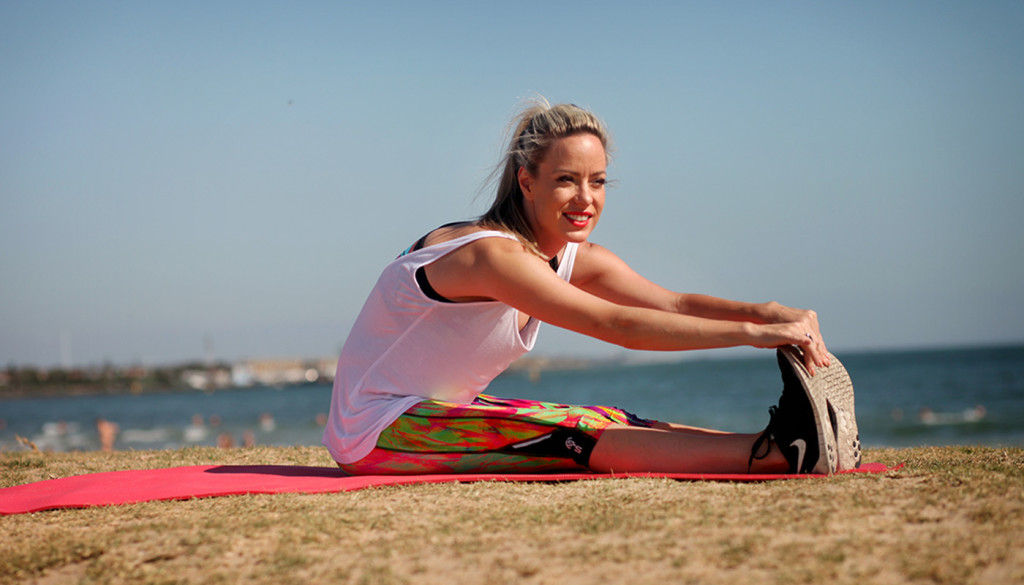One order of success, with a side of nutrition please
The plans we've made are going well. Until they're not. The path we're on takes a sudden twist and our plans are no more. How do you react to that turbulence? It is your response that defines who you are and what you will become.
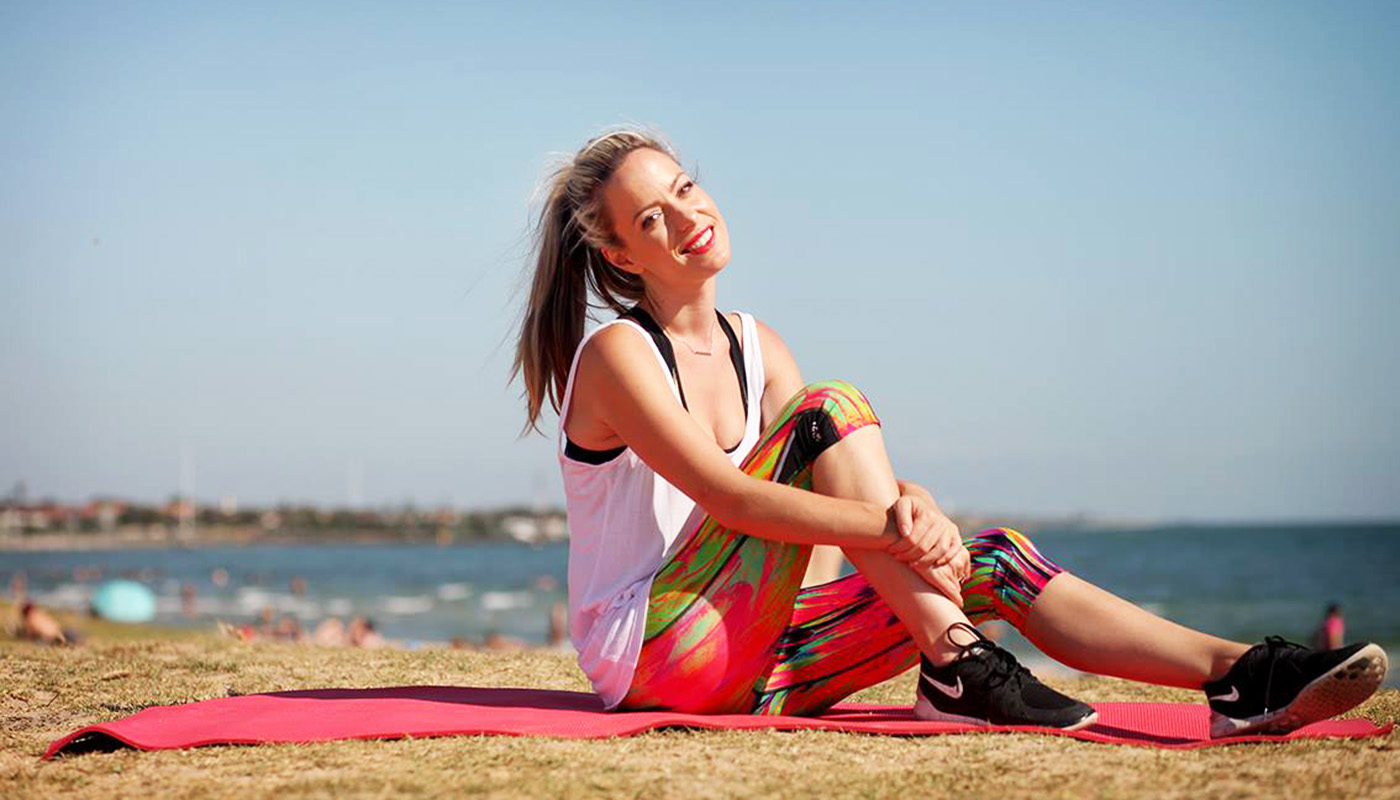
Meet Amanda Campbell.
For the most part, Amanda Campbell had a good life. As a teenager, she and her twin sister lived in the energetic city of Melbourne, sang songs they wrote together, and welcomed the culture of the changing millennium. Amanda was a vivacious young woman with a bright future ahead of her, and she knew it.
After graduating high school and studying musical dance and theatre, Amanda immersed herself in the fashion industry. Although she began by working as an executive assistant to some of Australia’s top fashion designers, it wasn’t long before she embarked on her own venture. Once she had tasted entrepreneurship, Amanda knew it was her calling.
You see, Amanda is one of those people who gravitates toward being the leader in whatever group she’s in. A-type personality, confident, bold, but also sensitive, you won’t find her at the back of the room.
She’s OK with that.
“Not everyone finds themselves comfortable in that role, creating new ideas all the time and implementing them,” Amanda told me. “Some people like having a bit of strategy and knowing what they’re doing every day in a more methodical sense. I’ve always been half an academic and half a creative; it just fulfils something in me.”
The way Amanda was headed, you’d most likely be wearing something that had passed through her hands today.
That is, had she not been diagnosed with multiple sclerosis at age 24.
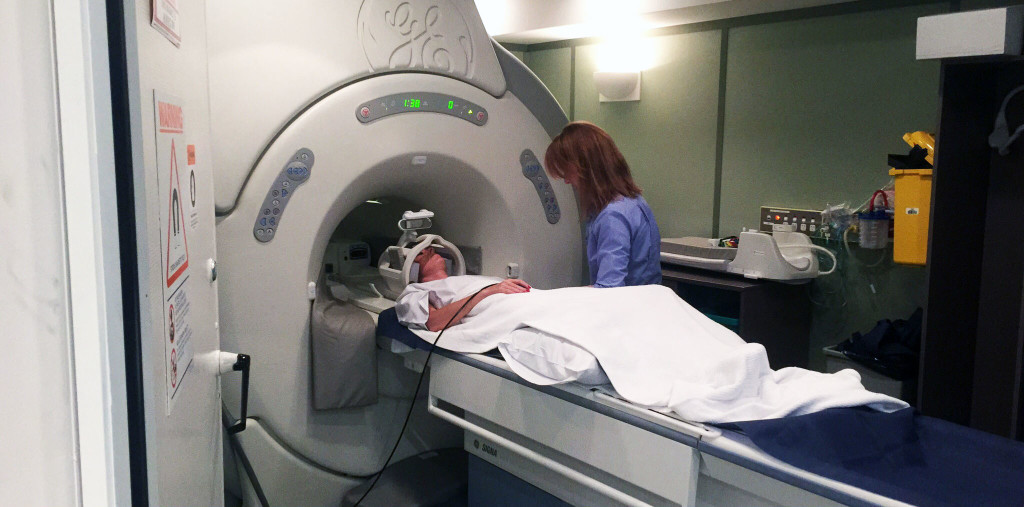
Amanda undergoing an MRI scan
I’m told that being diagnosed with multiple sclerosis is like being given a death sentence. Except it’s not. You’ll live, but the disease is in the driver’s seat, capable of slowly taking your body away from you, causing you pain, giving your muscles spasms, and stealing your abilities through paralysis. Multiple sclerosis is advertised as incurable, so after a severe attack, life as you know it is over.
Multiple sclerosis (MS) is an autoimmune disease that attacks the sheath of the nerves in your brain and spinal cord. For the medically uneducated, Amanda explains it like this:
“Everyone has experienced their iPhone charger cable fraying. It becomes worn out and you can start to see the electrical wires coming through. In this example, the electrical wires are your nerves, and the outer cover that protects those wires is called the myelin sheath. That allows electrical impulses to connect from one part of your brain to the other and out to your muscles, without interruption.”
When you have MS, the immune system attacks the myelin sheath, causing inflammation. Once the inflammation is reduced with steroids, the affected area becomes scar tissue, often permanently damaging that region in your central nervous system. This can result in symptoms like losing control of your bowels, bladder, balance, coordination, speech, and ability to swallow, although symptoms vary with different areas of attack.

All of this was new to Amanda when she was first diagnosed in 2004. In hindsight, she remembers the subtle signs – some tingling here and there, a bit of numbness in the extremities at times – but there was no warning. She did have an MRI scan when she was 19, but the results were inconclusive, leaving Amanda no choice but to put her life on indefinite hiatus when, at age 24, she discovered she had three lesions.
“I was shattered. I was shocked. I didn’t expect the diagnosis. I remember walking into the doctor’s office with my mum and my sister like everything was going to be fine, and my first thought was, ‘Can I still have a family?’”
“You do find that going through things like this you realise what your priorities are and what’s important to you,” she remembers.
This was in 2004. The symptoms then were intense but bearable. That changed in 2009, when MS tightened its grip.
A big attack left Amanda hospitalised and in pain. The hours of MRI scans and tests she was subject to only confirmed what the visible signs indicated. Over the next 10 days, the left side of Amanda’s face drooped. Her left hand and arm stopped responding and became paralysed. Her hip, leg, and foot soon followed suit, and at the end of the 10 days, Amanda was fully paralysed on her left side like a victim of a severe stroke.
Fundamental abilities that you and I take for granted, such as being able to wash and feed ourselves, gradually became impossible privileges for Amanda, slipping out of her grasp as each day wore on.
“That was the craziest and scariest time of my life,” Amanda recalls. She describes her stay in hospital as a time where hope was nothing more than an abstract concept.
It may be a far stretch to say that these circumstances were necessary for Amanda to experience the success she’s had today. There is however, no doubt that the trauma sparked a mental resolve which has been instrumental in forging her life’s philosophy and determination.
“If you push away what’s happening in your reality,” she says, “it becomes harder to deal with and creates suffering. Once you accept that this is happening right now, you find a way to stop the suffering.”
Once Amanda accepted that she had multiple sclerosis, she began to research the disease and its relationship with her body. She explored the benefits of eating well and having a positive attitude, and she discovered kinesiology.
It was this that changed her life.
Defined as the study of human movement, or “the way the mind and body connect to each other” as Amanda explains it, kinesiology uses psychology and physiology to produce results that border on miraculous.
This was evident when, within 6 weeks of being introduced to the practice, Amanda stunned the team of neuro-physiotherapists and kinesiologists helping her by not only walking, but running.
With her health improving, Amanda decided to go back to school to find out more about the practice that had given her life back. She began researching ways to treat the disease, and came across the work of Dr. Terry Wahls, a neurologist in the States who suffered from progressive MS.
Working out of a tilt-recline wheelchair, Dr. Wahls’ read about studies in mice which showed that nourishing mitochondria in cells led to their repair. By taking supplements that did this, she was able to go from rapid decline to plateau. Good, but not great.
Then Dr. Wahls began experimenting with getting her nutrients from what she was eating, rather than supplements. She changed to a diet of colourful fruits and vegetables, green leafy vegetables, sulphur and iodine-rich foods, quality protein, and good fat. Although she had spent three years imprisoned by her wheelchair, after nine months of following this diet, Dr. Wahls was biking an 18 mile marathon.
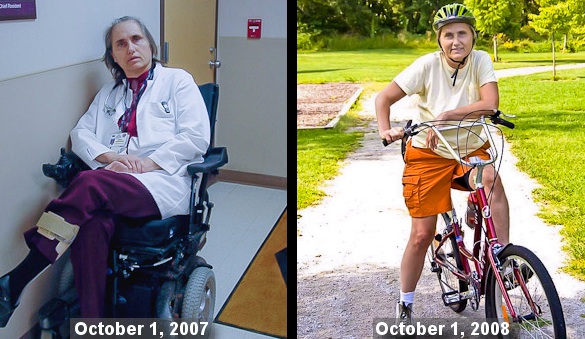 Dr. Terry Wahls
Dr. Terry Wahls
It should come as no surprise that diet as a method of treating the untreatable is met with skepticism on online forums. The rapid transformations arouse suspicions in a world where everyone with an opinion is an expert on the internet. A peruse of the debates, however, will show that those who are doubtful are those who haven’t tried it. It begs the question then: does what we eat and feel really have that much power over our health?
Amanda thinks so, and not just because her research has shown that this is consistently the case. She thinks so because, while she could walk and run, she still experienced an enormous amount of pain and discomfort every day, and changing her diet to the Wahls Protocol eliminated that from her life. It’s different for her though. She doesn’t see it as being only about repairing cells with nutrients from your diet, which is the scientific explanation for how it works.
“While nutrition nourishes your body on a cellular level and helps you physically,” she explains, “it also helps you mentally because your brain and gut are truly connected. That’s what I’ve learned.”
Suddenly all the pieces of the puzzle began coming together. If kinesiology is the study of how the brain and the body connect, what happens when the body is healthy and the brain is fortified?
Thus Bend Like Bamboo was born.

“When you feel really sick, you don’t have the energy to do the research yourself,” Amanda says. “Sometimes you just want all the doors opened for you. You’re quite willing to get better, but you don’t understand how.”
That’s what Bend Like Bamboo does. Amanda gives her clients a balanced approach through her health program. She utilises all that Western medicine has to offer by working with a great team of doctors that support her, whilst combining this with complementary medicine. Once she addresses nutrition on top of this, her results are most profound.
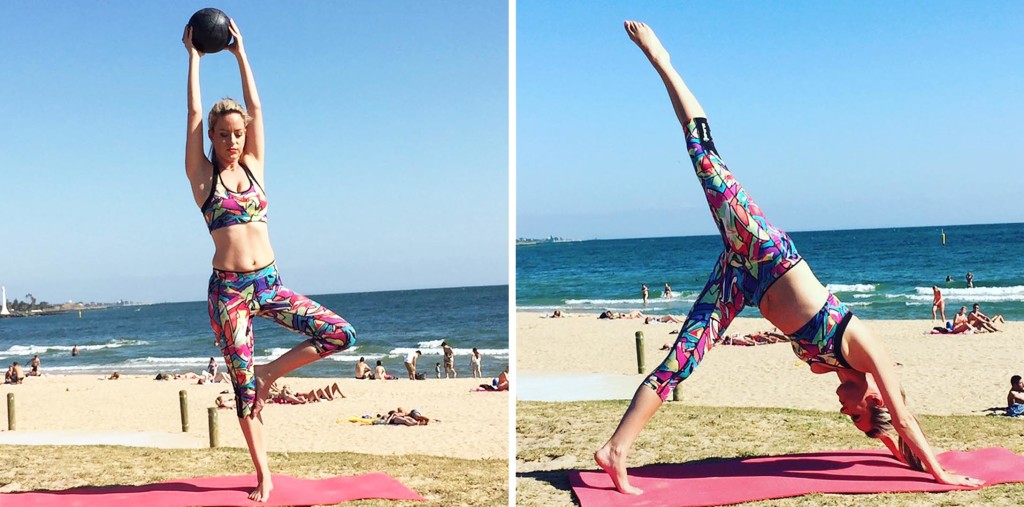 Amanda has fully regained her balance
Amanda has fully regained her balance
It’s rewarding work. Amanda recounted with a tremble in her voice how one semi-paralysed client of hers had found walking very difficult for years. With nutrition to repair the damage and kinesiology to wake the muscles, Amanda was able to prove to him that change and transformation can happen.
Giving people hope in situations like this is what motivates Amanda. The money is just a byproduct of doing what you love to the fullest extent, because when you’re wholeheartedly dedicated to your cause, money is never far behind.
While working at Bend Like Bamboo, Amanda had a caterer cook small batches of meats and vegetables for her clients so they’d be able to eat on the go. Fulfilling patients’ need to eat well was becoming cumbersome, but singles, couples, new dads and mums, and people with disabilities found it difficult to adhere to the healthy diet.
There had to be a better way for busy and challenged people to eat good food. When Amanda discovered that there was no easy solution, she did was she does best: she created one.
Called Nourissh, the business delivers fresh, local and organic nutrient-rich food to people’s homes. It has proven very popular – so much so that they’ve received considerable interest from investors.
 Kung Pao chicken with cashews, chilli and Asian greens, brown rice and coriander by Nourissh
Kung Pao chicken with cashews, chilli and Asian greens, brown rice and coriander by Nourissh
In early 2015, wine delivery company Vinomofo began seeking a partner to branch out into the food market with. They had been interviewing companies who might fit with their ethos when founder Justin Dry met Amanda in mid 2015. That conversation led to a $250,000 seed investment round to grow Nourissh.
Unsure of whether success comes easily to Amanda or she just makes it sound that way, I asked her, “Why you? Why did Vinomofo partner with you and not the many others they spoke to?”
“Because of the why,” she replied.
“People don’t buy what you do. They buy why you do it. I use the inspirational and educational aspects of what my story serves, which I see now, as a vehicle to help others realise that they too can make a change and a transformation in their lives. I want people to know that every meal is a chance to renew themselves in any way that they wish to be.”
Nourissh delivers about 500 meals a week in the Melbourne area already, and the future’s expansion plans are nothing short of ambitious. Amanda tells me they are preparing a new product called Nourissh at Work, and will expand delivery to all of Australia. There will be a motivational and educational aspect to the company led by Amanda, which will complete what Nourissh offers.
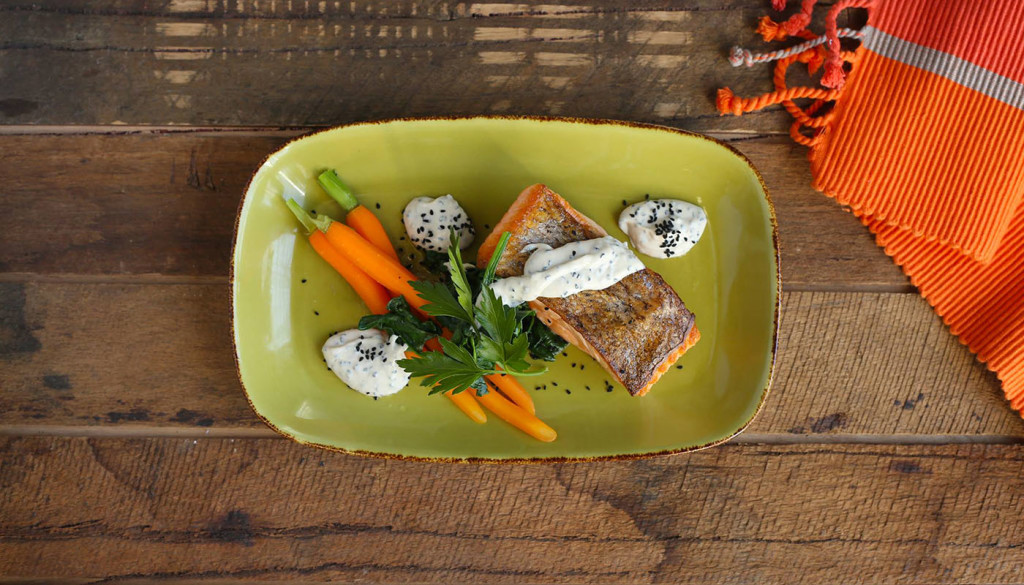 Roast Tasmanian salmon fillet with boiled spinach, black sesame dressing, ginger and pickled young carrots by Nourissh
Roast Tasmanian salmon fillet with boiled spinach, black sesame dressing, ginger and pickled young carrots by Nourissh
One of Amanda’s biggest passions will come to fruition in the near future when she launches a programme where she’ll go into schools and educate children on the benefits of health. Young school kids will learn things Amanda’s grandmother passed on to her, like how to grow food, what to eat and when, and how to prepare food from your garden.
With Nourissh, the why is never far away from the what.
Amanda truly believes that believing in yourself, which kinesiology helped her do, is the key to living a fulfilling life. Realising this essential truth certainly hasn’t been an overnight revelation. 11 years of pain and determination have shown Amanda that discovering her purpose is what has brought her happiness in its truest sense.
“One must lose the idea they have about themselves to find who they are.”
If she could travel back to 1999 and have a conversation with her younger self, she tells me she’d say, “Find what it is that ignites a spark in you that doesn’t involve getting paid and understand why you do what you do. Understand what motivates and drives you and what sets you alight, and implement that ‘why’ into a business.”
Amanda has done that, in her life, in her work with Bend Like Bamboo and Nourissh, and in the way she’s shared her experience with others. And she’s done it beautifully.
For the most part, Amanda has had a good life. She’s a vivacious young woman with a bright future ahead of her, and she knows it.
So do we.
